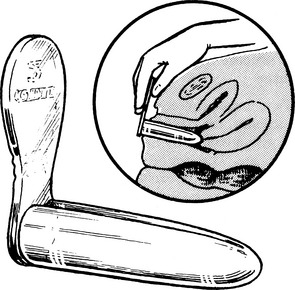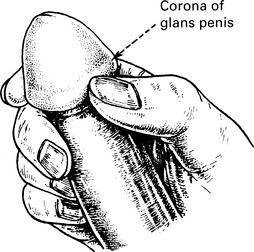Chapter 16 Sexuality and Contraception
Physiology of coitus
Excitement phase
| Female | Male |
|---|---|
| Vasodilatation and vasocongestion of all erectile tissue. Breasts enlarge, the vaginal ostium opens and secretion from the vestibular glands and vaginal exudations cause ‘moistening’ | Penile erection occurs and may be transient and recur if this stage is prolonged. Scrotal skin and dartos muscle contract and draw testes towards the perineum |
Plateau phase
| Female | Male |
|---|---|
| Vasocongestion increases, and contraction of the uterine ligaments (which contain muscle) lift the uterus and move it more into alignment with the axis of the pelvis. The cervix dilates. There is engorgement of the lower third of the vagina and ballooning of the upper two thirds | The intensity of penile erection increases and the testes are enlarged by congestion. Seminal fluid arrives at the urethra as a result of sympathetic nervous stimulation of the vas deferens, seminal vesicles and the prostate. There is some pre-ejaculatory penile discharge which may contain sperm |
Orgasm
| Female | Male |
|---|---|
| Climactic sensations appear to be caused by spasmodic contractions of vaginal muscles and uterus. The female is potentially capable of repeated orgasm | Strong contractions pass along the penis causing ejaculation of seminal fluid. The greater the volume of ejaculate (after several days’ abstinence) the more intense the sensations of orgasm |
Dyspareunia
Sexual problems affecting the male
Premature ejaculation
The male ejaculates with minimal sexual stimulation or before he wishes it to occur.
Treatment options for erectile dysfunction
Papaverine
This is a smooth muscle relaxant. Intracavernosal injection is an effective treatment for impotence.






